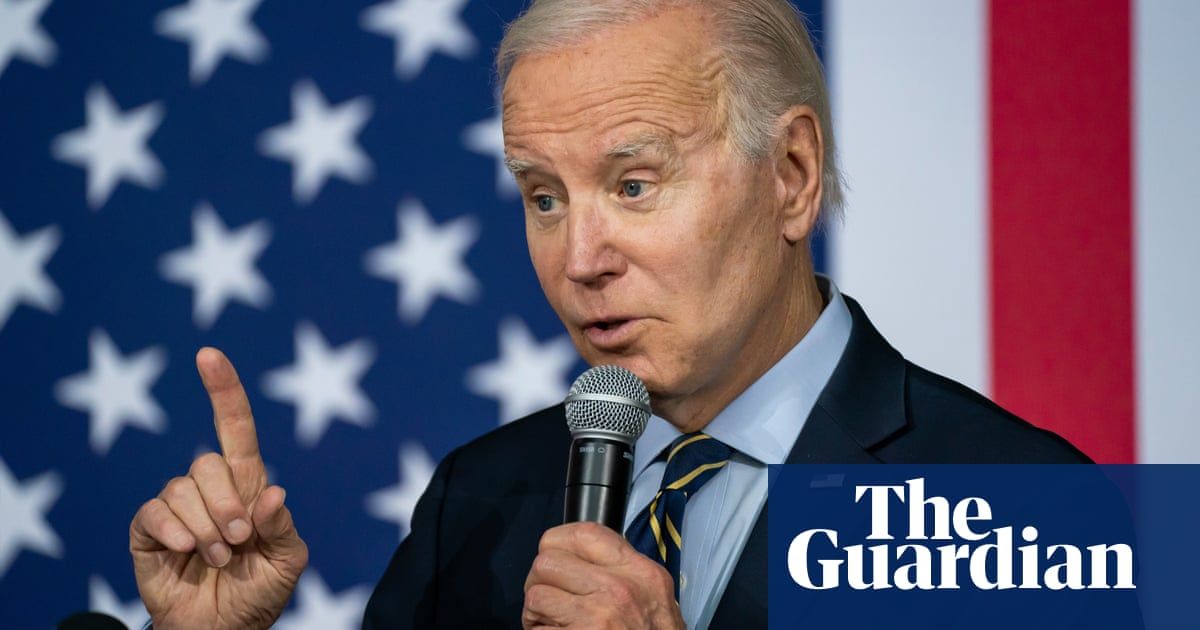Should US get rid of debt ceiling altogether? Lawmakers consider it as crisis looms
In just a few weeks, the US may be unable to pay its bills.
A divided Congress has still not reached an agreement on raising the debt ceiling, and time is running out to avoid a default. The treasury secretary, Janet Yellen, has warned that the government may be unable to cover its financial obligations as early as 1 June. And economists predict that a federal default would cause unemployment and interest rates to rise as the country’s GDP shrinks, wreaking havoc on Americans’ finances.
As Congress clashes, some lawmakers and economists have suggested a novel way to avoid future disputes over the debt ceiling: get rid of it entirely.
Critics argue that the debt ceiling, created by Congress in 1917, has long since outlived its usefulness and has instead become a political weapon that could ultimately sink the US economy.
Senator Sheldon Whitehouse, the Democratic chair of the Senate budget committee, recently reintroduced a bill that would eliminate what he derides as “the bear trap in the bedroom that is the debt ceiling”.
“Extremist Republicans threatening the American people with default – again – puts a very fine point on the need to get rid of this arbitrary mechanism that offers no benefits yet carries with it the power to deliver serious damage,” Whitehouse told the Guardian. “The immediate priority is for Congress to cleanly raise the debt limit to avoid driving our economy off a cliff, and then we can get to work making sure we avoid future destructive rinse-and-repeat scenarios.”
Economists echoed Whitehouse’s point at a Senate budget committee hearing on Thursday, suggesting that Congress should find a new way to handle the government’s borrowing limit.
Speaking to the Guardian after the hearing, Mark Zandi, chief economist at Moody’s Analytics, described the debt limit as “totally anachronistic”. Although the debt ceiling might have previously spurred bipartisan negotiations over government spending levels and priorities, the threat of default was much too high in the US’s current era of hyper-polarized politics, he argued.
“It’s doing more harm than good,” Zandi said. “Twenty-five years ago, the debt limit may have resulted in some policy changes. I don’t think that’s the case any longer. It’s doing real damage, and we just need to get rid of it.”
But for those looking to curtail the nation’s ballooning debt, which now stands at more than $31tn, the debt ceiling has served as a useful tool to spur budgetary reform. House Republicans’ debt ceiling bill, which narrowly passed the lower chamber last week, would raise the government’s borrowing limit until May 2024 while cutting federal discretionary spending to 2022 levels and capping annual increases at 1%.
“Right now, the debt limit, as flawed as it is, is the only real, true lawmaker vote available that truly covers and trades off the whole federal budget,” Brian Riedl, senior fellow at the conservative thinktank Manhattan Institute, said at the Senate committee hearing on Thursday.
“If we don’t want lawmakers to use this risky and flawed process to address growing deficits, then let’s debate and come up with a federal budget process tool to have these debates and trade-offs.”
The drawbacks of playing politics over the debt limit are severe. In 2011, when congressional Republicans clashed with Barack Obama over the debt ceiling, they ultimately succeeded in passing the Budget Control Act. The law included government spending caps, but Congress ended up raising them to avoid painful funding cuts, leading even the architects of the legislation to deem it a failure. However, as a result of the prolonged standoff over the debt ceiling, the US experienced its first ever credit downgrade.
skip past newsletter promotion Sign up to The Guardian Headlines US Free newsletter For US readers, we offer a regional edition of our daily email, delivering the most important headlines every morning Privacy Notice: Newsletters may contain info about charities, online ads, and content funded by outside parties. For more information see our Newsletters may contain info about charities, online ads, and content funded by outside parties. For more information see our Privacy Policy . We use Google reCaptcha to protect our website and the Google Privacy Policy and Terms of Service apply. after newsletter promotion
Democrats emerged from the 2011 crisis with a determination to never again negotiate over the debt ceiling. Biden has stuck to that strategy, rejecting House Republicans’ proposal and insisting that Congress must pass a “clean” bill raising the debt ceiling without any strings attached.
“America is not a deadbeat nation,” Biden said last week. “We pay our bills, and we should do so without reckless hostage-taking from some of the Maga [Make America great again] Republicans in Congress.”
Biden is scheduled to meet with the top four congressional leaders, including the House speaker, Republican Kevin McCarthy, on Tuesday to discuss the debt ceiling. Senator Chuck Grassley, the ranking member of the Senate budget committee, urged Biden to negotiate in “good faith” with McCarthy to reach an agreement.
“I hope when the president sits down with the speaker, he will bring an open mind and a serious counteroffer,” Grassley, a Republican, said at the Thursday hearing. “The longer the president spends dragging his feet and putting off negotiations, the closer President Biden brings us to the first ever federal default in US history.”
Compared with other recent clashes over the debt ceiling, the current conflict appears to be “more serious”, Zandi said. Even if lawmakers can successfully raise the debt ceiling in the coming weeks, Zandi fears the country is on a crash course.
“We’re getting inured to it, and so we’re just taking it closer and closer to the brink,” Zandi said. “And at some point, you’re going to make a mistake.”
Source: The Guardian


